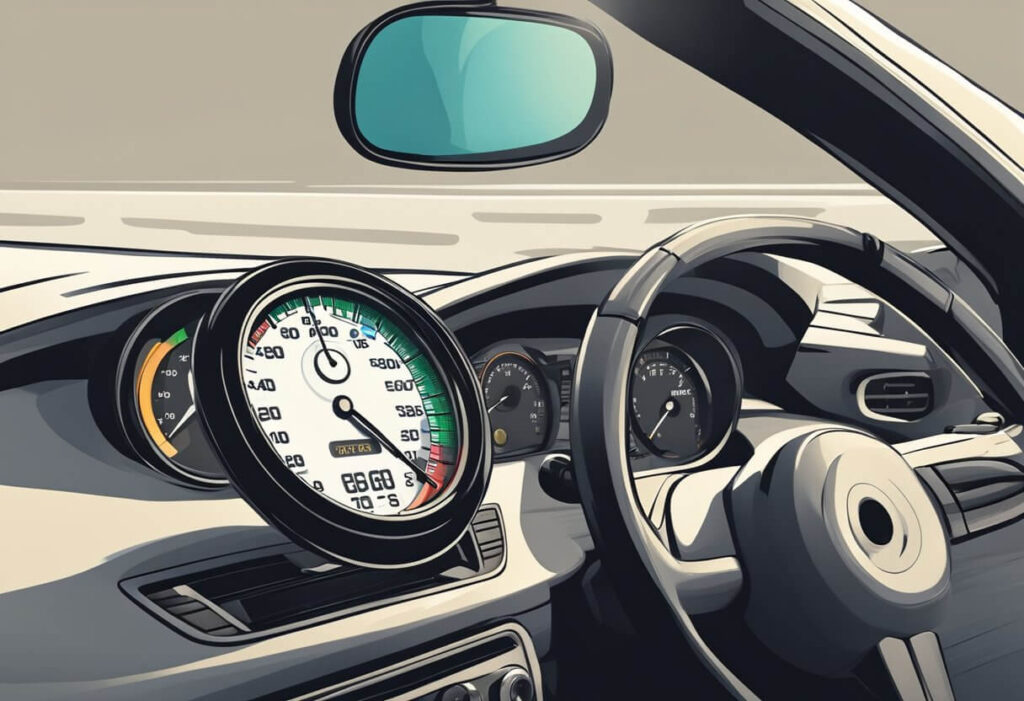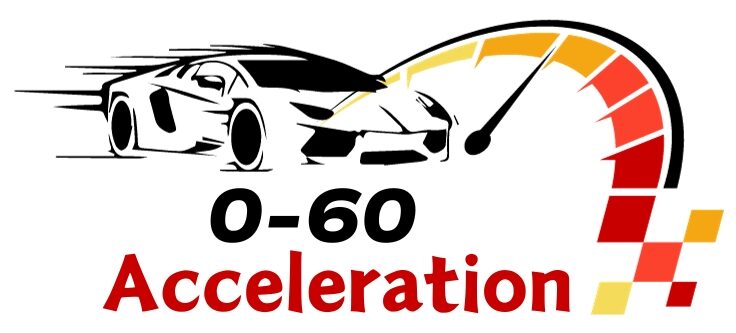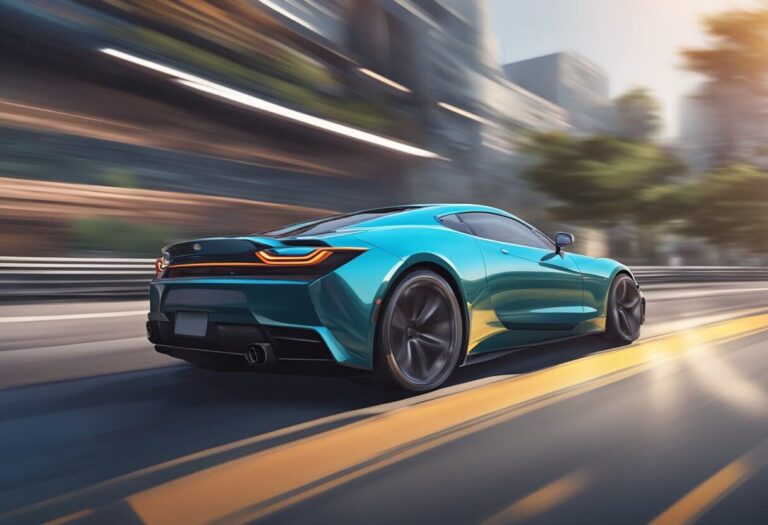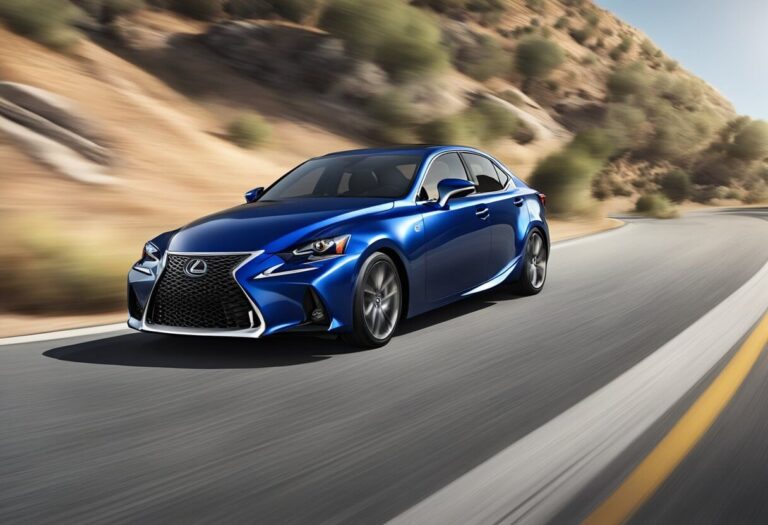
With the continuous advancements in automotive technology, modern cars can reach exhilarating speeds in seconds. But when looking at a vehicle’s performance, one metric stands out – the 0-60 time. What constitutes a good 0-60 time for a car? The answer depends on a variety of factors, but generally, anything under 4 seconds is considered excellent for performance vehicles.
This article will examine the intricacies of 0-60 times by defining what they are, their significance in measuring performance, industry benchmarks, techniques for improvement, top performers, and their relevance in real-world driving. By understanding the nuances around 0-60 acceleration data, you’ll be better equipped to evaluate vehicles and make an informed decision for your specific needs. Now let’s dive under the hood and break down the specifics of this critical performance statistic.
Understanding 0-60 Times

Definition of 0-60
The 0-60 time is a measure of the time it takes for a vehicle to accelerate from 0 to 60 miles per hour. It is a common metric used to gauge the acceleration and overall performance of a vehicle. The 0-60 time is typically measured in seconds and is considered a benchmark for high-performance vehicles.
Significance in Automotive Performance
The 0-60 time is a crucial indicator of a vehicle’s performance. A faster 0-60 time generally means that a vehicle can accelerate quicker and reach higher speeds. This is particularly important in racing and high-performance driving where every second counts. A vehicle with a faster 0-60 time can also provide a more exhilarating driving experience, as the driver can feel the power and acceleration of the vehicle.
While 0-60 mph acceleration time is often used as a benchmark for evaluating a car’s performance, it provides an incomplete picture. A fast 0-60 time alone does not make a great performance car. Factors like handling, braking, top speed, and lap times are also critical in determining how a car performs in real world driving. The 0-60 metric can also vary based on testing conditions.
Ultimately, consumers should look at a combination of performance metrics, not just 0-60 times, when assessing a vehicle’s capabilities. The total package of acceleration, braking, cornering grip, steering feel and top speed is what defines a truly high performance automobile.
Benchmark Standards
Industry Averages
When it comes to 0-60 times, industry averages are a good place to start. According to Road & Track, the average 0-60 time for a new car in 2024 is around 7.5 seconds. However, it’s important to note that this number can vary depending on the type of car and its intended use. For example, a family sedan may have a slower 0-60 time than a sports car or a performance SUV.
Performance Vehicles Standards
When it comes to performance vehicles, the benchmark for a good 0-60 time is generally considered to be under 5 seconds. This is because performance vehicles are designed to accelerate quickly and provide a thrilling driving experience. However, it’s important to note that not all performance vehicles are created equal. A high-end sports car may have a 0-60 time of under 3 seconds, while a performance SUV may have a 0-60 time of around 5 seconds.
It’s also worth noting that 0-60 times are just one aspect of a vehicle’s performance. Other factors, such as handling, braking, and top speed, are also important to consider when evaluating a performance vehicle. Ultimately, the ideal 0-60 time will depend on the individual’s preferences and intended use for the vehicle.
Factors Affecting 0-60 Times

There are several factors that can affect a car’s 0-60 time. Understanding these factors can help you determine what makes a good 0-60 time and how to improve your car’s performance.
Engine Power
The engine power is one of the most important factors affecting a car’s 0-60 time. Generally, a more powerful engine will result in a faster acceleration. This is because the engine is responsible for providing the necessary torque to the wheels. The more torque the engine can produce, the faster the car can accelerate.
Car Weight
Car weight also plays a crucial role in determining a car’s 0-60 time. A lighter car will typically accelerate faster than a heavier car, even if both cars have the same engine power. This is because a lighter car requires less energy to get moving, which means it can accelerate faster.
Transmission Type
The type of transmission in a car can also affect its 0-60 time. A manual transmission, for example, can allow for faster acceleration since the driver has more control over the gear changes. An automatic transmission, on the other hand, can limit acceleration since the gear changes are controlled by the car’s computer.
Tire Grip
The amount of grip that a car’s tires have on the road can also affect its 0-60 time. Tires with better grip will allow for faster acceleration since they can transfer more power from the engine to the road. This is why high-performance cars often have wider tires with more grip.
Aerodynamics
A car’s aerodynamics can also play a role in its 0-60 time. A car with better aerodynamics will experience less air resistance, which means it can accelerate faster. This is why many high-performance cars have sleek, aerodynamic designs.
Drivetrain Layout
The drivetrain layout can also affect a car’s 0-60 time. A rear-wheel-drive car, for example, can often accelerate faster than a front-wheel-drive car since the weight of the car is shifted towards the rear, which provides better traction. All-wheel-drive cars can also provide better traction and acceleration, especially in slippery conditions.
In conclusion, a good 0-60 time is dependent on several factors, including engine power, car weight, transmission type, tire grip, aerodynamics, and drivetrain layout. By understanding these factors, you can make informed decisions when it comes to improving your car’s performance.
Measuring Techniques

Professional Testing
Measuring 0-60 times is usually done in a closed setting such as a race track or closed lot used for professional drivers. This is done to reduce risk to the drivers, their teams, and the public. The closed course is set up for test-drives in order to reduce any variables, such as wind, weather, and traction. Professional testing is considered the most accurate way to measure a car’s 0-60 time.
Professional testing involves using specialized equipment to measure the car’s acceleration time. The equipment used includes a GPS device, a data logger, and a computer. The GPS device is used to measure the car’s speed and position, while the data logger records the measurements. The computer then processes the data to calculate the car’s 0-60 time.
Consumer Testing Devices
There are also consumer testing devices available that can be used to measure a car’s 0-60 time. These devices are generally less accurate than professional testing equipment but can still provide a good estimate of a car’s acceleration time.
One of the most popular consumer testing devices is the Dragy GPS Performance Meter. This device uses GPS technology to measure a car’s acceleration time and can be easily installed in any car. The Dragy GPS Performance Meter provides accurate measurements of a car’s 0-60 time, as well as other performance metrics such as quarter-mile time and top speed.
Another popular consumer testing device is the VBOX Sport Performance Meter. This device uses advanced GPS and accelerometer technology to measure a car’s performance. The VBOX Sport Performance Meter provides accurate measurements of a car’s 0-60 time, as well as other performance metrics such as lateral G-forces and lap times.
Overall, both professional testing and consumer testing devices are effective ways to measure a car’s 0-60 time. Professional testing is more accurate but requires specialized equipment and a closed course, while consumer testing devices are more accessible but may be less accurate.
Top Performers

When it comes to 0-60 times, there are certain vehicles that stand out as top performers. These vehicles are often high-end sports cars or electric vehicles that are designed to go fast and provide an exhilarating driving experience.
Supercars
Supercars are known for their impressive 0-60 times, often clocking in at under 3 seconds. These vehicles are designed to be high-performance machines, with powerful engines and advanced aerodynamics. Some of the top performers in this category include the Bugatti Chiron, the Lamborghini Aventador, and the Porsche 911 GT2 RS.
Electric Vehicles
Electric vehicles are also making a name for themselves in the world of 0-60 times. With instant torque and powerful electric motors, these vehicles can accelerate quickly and quietly. Some of the top performers in this category include the Tesla Model S, the Rimac Concept One, and the Porsche Taycan.
Improving 0-60 Times

There are two main ways to improve a car’s 0-60 time: performance modifications and driving techniques.
Performance Modifications
One of the most effective ways to improve a car’s 0-60 time is by making performance modifications. Here are some modifications that can help:
- Engine Tuning: Tuning the engine can help improve power output and acceleration. This can be done by installing a performance chip, upgrading the air intake system, or installing a performance exhaust system.
- Lightweight Parts: Reducing the weight of the car can also help improve acceleration. This can be done by replacing heavy parts with lightweight ones, such as carbon fiber body panels or lightweight wheels.
- Tires: High-performance tires can provide better traction, which can help improve acceleration. It’s important to choose tires that are appropriate for the type of driving you’ll be doing.
Driving Techniques
In addition to performance modifications, there are also driving techniques that can help improve a car’s 0-60 time. Here are some techniques to try:
- Launch Control: Launch control is a feature that’s available on many high-performance cars. It allows the driver to optimize the car’s acceleration from a standing start.
- Manual Shifting: Shifting gears manually can help improve acceleration by keeping the engine in its power band.
- Weight Transfer: Shifting weight to the rear of the car during acceleration can help improve traction and acceleration. This can be done by easing off the clutch or by using the throttle and brake pedals together.
By combining performance modifications and driving techniques, it’s possible to significantly improve a car’s 0-60 time. However, it’s important to note that a good 0-60 time doesn’t necessarily mean a car is the best choice for all drivers. Other factors, such as handling, comfort, and fuel economy, should also be considered when choosing a car.
Real-World Relevance
Everyday Driving
While having a fast 0-60 time may seem impressive on paper, it may not necessarily translate to a better driving experience in everyday situations. In fact, most drivers rarely have the opportunity to fully utilize a car’s maximum acceleration.
For instance, in stop-and-go traffic, a car’s ability to accelerate quickly from 0-60 mph becomes irrelevant. Similarly, on highways, where speed limits are typically capped at 65-75 mph, a car’s top speed is more important than its acceleration.
Legal Considerations
It’s also important to note that exceeding the speed limit is illegal and dangerous. While a car’s 0-60 time may be impressive, it does not mean that the driver should attempt to reach that speed on public roads.
Furthermore, the consequences of speeding can be severe, including fines, points on the driver’s license, and even license suspension. In some cases, excessive speeding can even result in criminal charges and jail time.
Final Thoughts
In conclusion, a good 0-60 time is subjective and depends on various factors such as the type of vehicle, its purpose, and the driver’s preference. While some drivers may prioritize speed and acceleration, others may prioritize fuel efficiency, comfort, or safety.
It is important to note that 0-60 times are not the only measure of a vehicle’s performance and should not be the sole factor in deciding which car to purchase. Other factors such as handling, braking, and overall driving experience should also be taken into consideration.
When comparing 0-60 times, it is essential to ensure that the data is accurate and reliable. Some manufacturers may exaggerate their cars’ performance figures, and different testing methods may produce different results.
Ultimately, the best way to determine what is a good 0-60 time is to test drive the vehicle and see how it performs in real-world conditions. Drivers should also consider their driving habits and needs to find a car that suits them best.
Overall, a good 0-60 time is a combination of speed, efficiency, and overall driving experience, and drivers should prioritize these factors accordingly when choosing a car.






